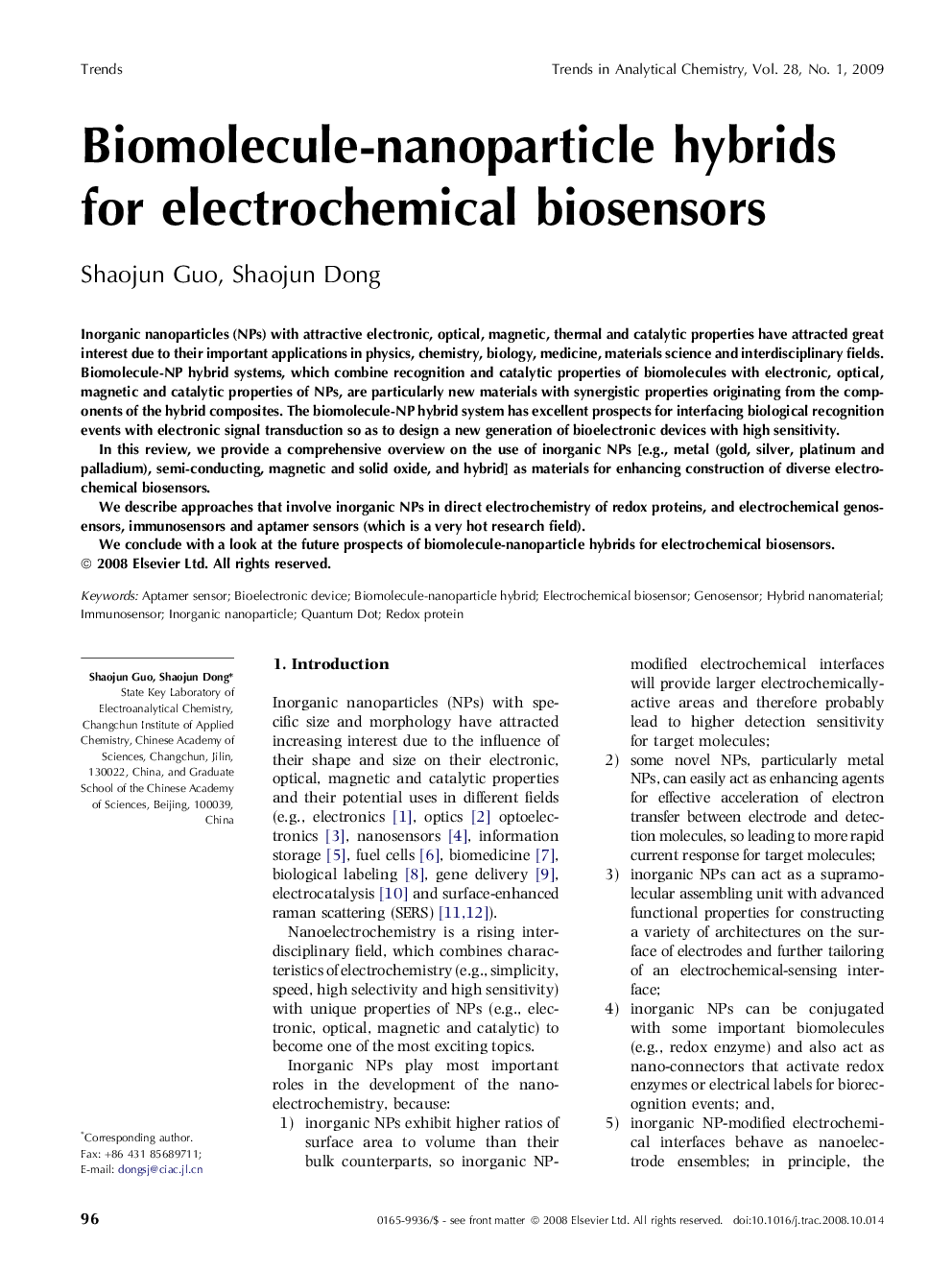| Article ID | Journal | Published Year | Pages | File Type |
|---|---|---|---|---|
| 1249393 | TrAC Trends in Analytical Chemistry | 2009 | 14 Pages |
Inorganic nanoparticles (NPs) with attractive electronic, optical, magnetic, thermal and catalytic properties have attracted great interest due to their important applications in physics, chemistry, biology, medicine, materials science and interdisciplinary fields. Biomolecule-NP hybrid systems, which combine recognition and catalytic properties of biomolecules with electronic, optical, magnetic and catalytic properties of NPs, are particularly new materials with synergistic properties originating from the components of the hybrid composites. The biomolecule-NP hybrid system has excellent prospects for interfacing biological recognition events with electronic signal transduction so as to design a new generation of bioelectronic devices with high sensitivity.In this review, we provide a comprehensive overview on the use of inorganic NPs [e.g., metal (gold, silver, platinum and palladium), semi-conducting, magnetic and solid oxide, and hybrid] as materials for enhancing construction of diverse electrochemical biosensors.We describe approaches that involve inorganic NPs in direct electrochemistry of redox proteins, and electrochemical genosensors, immunosensors and aptamer sensors (which is a very hot research field).We conclude with a look at the future prospects of biomolecule-nanoparticle hybrids for electrochemical biosensors.
